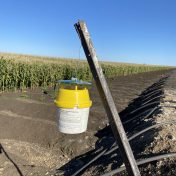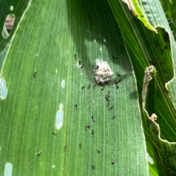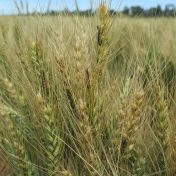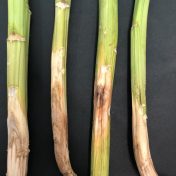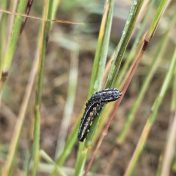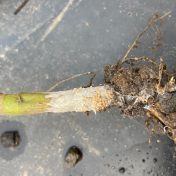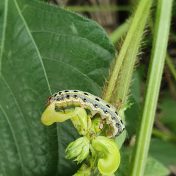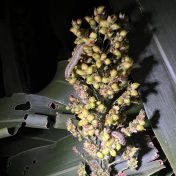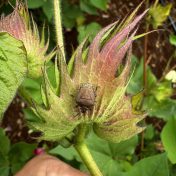The Field Crops Entomology Team at the Queensland Department of Agriculture and Fisheries has recently established a new moth pheromone trapping network to inform the northern grains industry of the seasonal population patterns of key caterpillar pests. A collaborative network of more than 25 growers and agronomists are assisting the monitoring of pheromone traps in 20 locations across 10 regions…. Read more »
Since 2022, an insecticide resistance surveillance program for fall armyworm (FAW) has been conducted annually by NSWDPIRD in collaboration with DAF entomologists. Resistance to older products, such as carbamates (Group 1A), organophosphates (Group 1B) and pyrethroids (Group 3A) has been confirmed in many FAW populations worldwide, and there are concerns that the increase in spraying to control FAW may lead… Read more »
As winter cereals, canola and pulses flower and fill grain, and temperatures rise, the risk of infestation by caterpillar pests increases. Below is a quick refresher on the risk of infestation and crop loss by common caterpillar pests: helicoverpa, native armyworms and fall armyworm. Key points: There is increased risk of infestation by Helicoverpa armigera this spring because of the… Read more »
Recent weather conditions have led to isolated outbreaks of two fungal diseases, fusarium crown rot and sclerotinia stem rot, in several grain crops across southern Queensland. Crown rot Crown rot, primarily caused by Fusarium pseudograminearum, has been detected in several barley crops across southern Queensland, but other winter cereal crops and regions are also at risk. Initial disease symptoms include… Read more »
There have been reports of sporadic moderate to high mouse activity from several Australian grain growing regions, including southern Queensland, where 3 sites had high activity (with up to 800 burrows/ha at one site). See the April GRDC/CSIRO Mouse Update for more information. High mice numbers when winter crops are planted can result in significant economic damage, and summer crops… Read more »
QDAF entomologists have recently inspected several infestations of fall armyworm (FAW) in forage oats on the Darling Downs. Oats are not a preferred host of FAW, but these infestations come at the end of the largest FAW season since the pest arrived in Australia. Oats are not usually inspected for pest insects, but agronomists are advised to check plants for… Read more »
Warm, wet conditions have led to isolated outbreaks of the fungal pathogen, Sclerotium rolfsii, in sorghum and grain legume crops across southern Queensland (although other regions are also at risk) and several disease outbreaks in mungbean crops growing throughout Queensland and northern New South Wales. Sclerotium rolfsii Sclerotium is a soilborne pathogen that can infect a wide range of plant… Read more »
As growers and agronomists are doing battle with fall armyworm (FAW; Spodoptera frugiperda) in maize and sorghum, another species of Spodoptera, the cluster caterpillar (Spodoptera litura; Figure 1) is causing substantial defoliation in summer pulses. We have received reports across Queensland of damaging infestations of cluster caterpillars from soybeans, mungbeans, and peanuts. A cluster caterpillar outbreak of this intensity has… Read more »
Maize and sorghum crops across Queensland are experiencing extreme fall armyworm (FAW) pressure. In Central Queensland in particular, sorghum planted in the typical planting window has been heavily impacted by the very high FAW pressure. Persistent, high-density infestations pose a risk to crops from emergence through to grain fill. In an unwelcome development not observed in previous seasons, large FAW… Read more »
High numbers of brown shield bugs (BSB, Dictyotus caenosus) have been reported in cotton fields from Hay through to Texas on the Queensland/New South Wales border. In pulse crops, these bugs (also referred to as ‘stink’ bugs) are part of the podsucking pest complex, and can cause both yield reductions and impacts to seed quality. Adults are about 8mm long… Read more »
